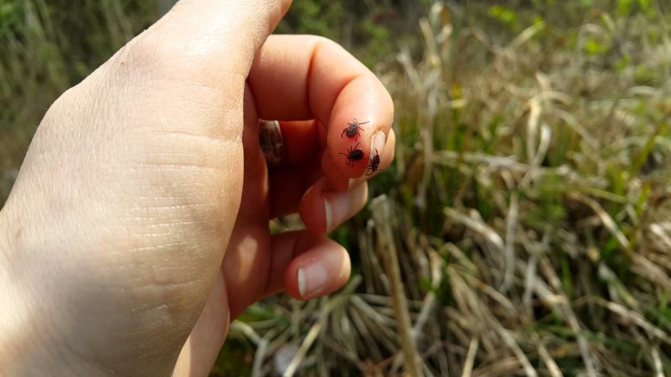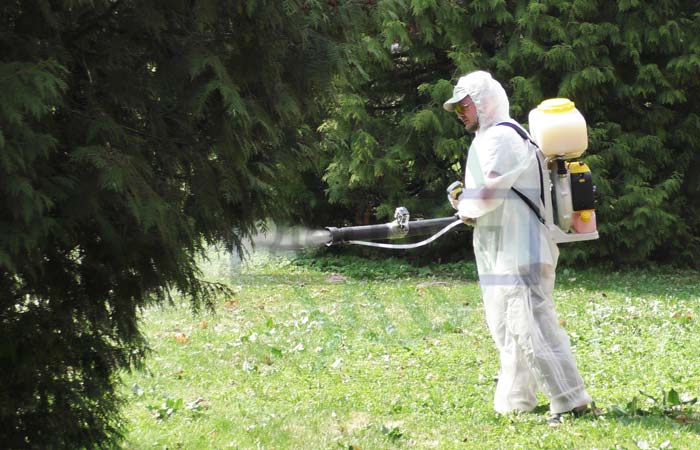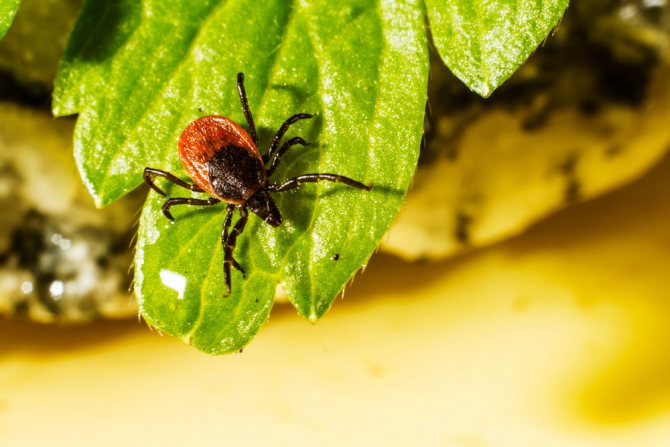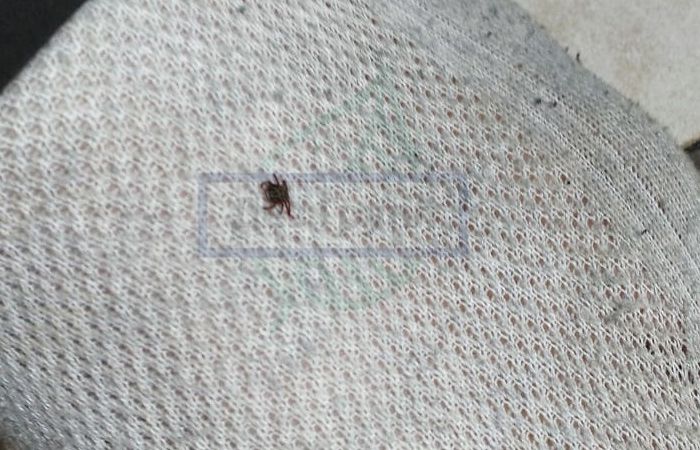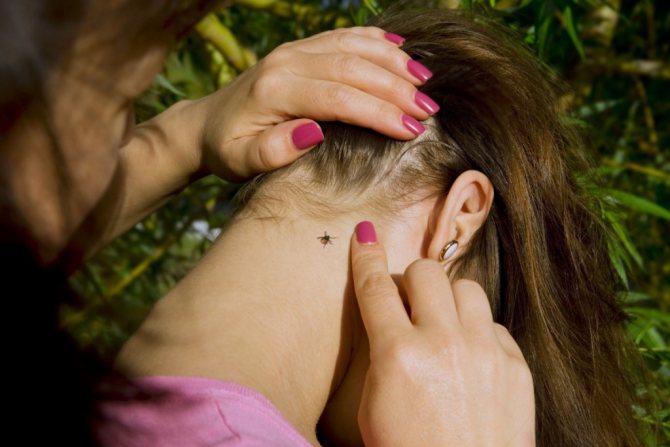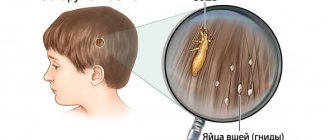Blood-sucking ticks are one of the most dangerous insects that can be encountered in Russia. Why is this the case? How will ticks behave in 2020? Where will the most unfavorable areas in terms of tick-borne activity be located? How to protect yourself from parasites and what to do if you have already been bitten?
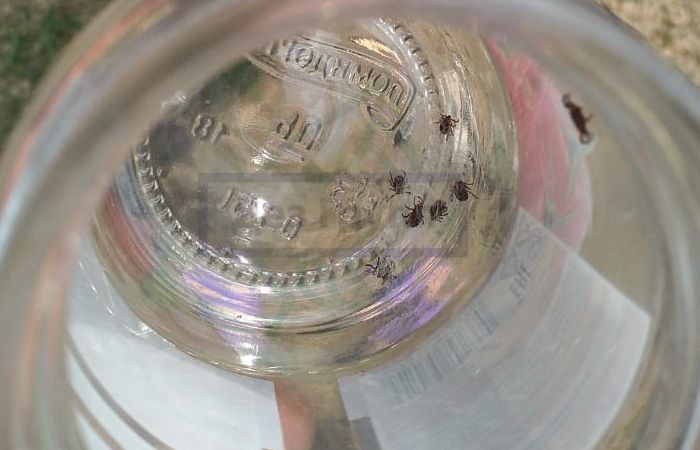
The main danger posed by ixodid ticks is various viral and bacterial diseases that they can transmit through bites. This could be:
- Tick-borne encephalitis
- Tick-borne rickettsioses
- Human granulocytic anaplasmosis
- Tularemia
- Ixodic tick-borne borreliosis
- Babesiosis
- Q fever
- Crimean hemorrhagic fever
- Siberian tick-borne typhus
- Human monocytic ehrlichiosis
Not all ticks carry dangerous infections. For example, out of 44,892 ticks studied in 2020 in the laboratory of the Moscow Center for Hygiene and Epidemiology, only 18.7% of the ticks were carriers of borreliosis. Thus, not every bite promises large-scale health problems, however, in order to find out the prospects right away, it is imperative to take the tick extracted from the wound for analysis and monitor the dynamics of your well-being in the first months after the bite, otherwise neglected infections can cause irreparable harm to health and treatment will be proceed for a long time and with complications.
Seasonal activity
The most dangerous stage for humans is the adult. Due to climatic conditions, the tick is able to go into diapause. They depend entirely on weather conditions. The higher the temperature, the freer the tick feels. If summer and autumn turned out to be cold, the parasite feels discomfort and quickly goes into hibernation.
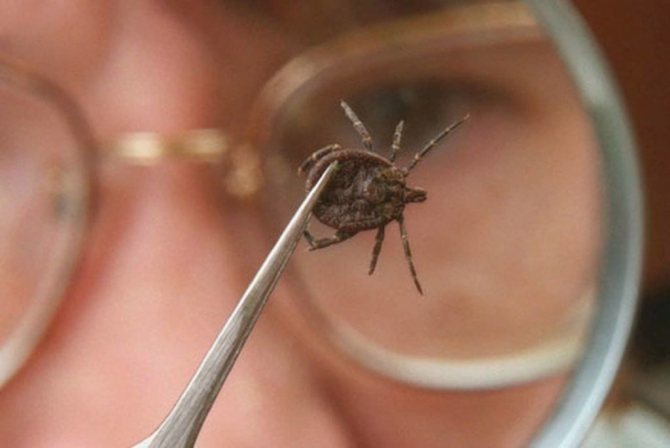

After winter, adults enter an active period. They start looking for a source of food. During this period, dogs and cattle are especially susceptible to attacks. The tick behaves aggressively, and it will not be stopped even by the snow that has not completely slept. The next peak of activity of mature individuals is autumn. Especially September. This month is not so hot and humid enough. As for the summer, it all depends on the conditions. Ticks do not like sultry and hot weather, they like moderate humidity, and do not tolerate drought. Therefore, on hot days, they are not active. But if the summer turned out to be warm, but rainy, then the ticks will continue to actively seek food for themselves.
What conditions do ticks like?
Ticks are one of the most adaptable representatives of the fauna. They live all over the world and, depending on the specific region, they may like different climatic conditions. But above all, their favorite habitat is the tropical climate. Humidity and warm seasons contribute to a reduction in the development time of an individual from 3 years to 1 year, or even less. Therefore, in countries where it is always warm, there are more ticks.
Another important factor for the reproduction of ticks is the length of daylight hours. For example, ticks in the southern part of Russia are active at different times in comparison with ticks in the northern part. In northern Russia, ticks peak in June-July. The peak of activity in the middle lane is in spring and autumn.
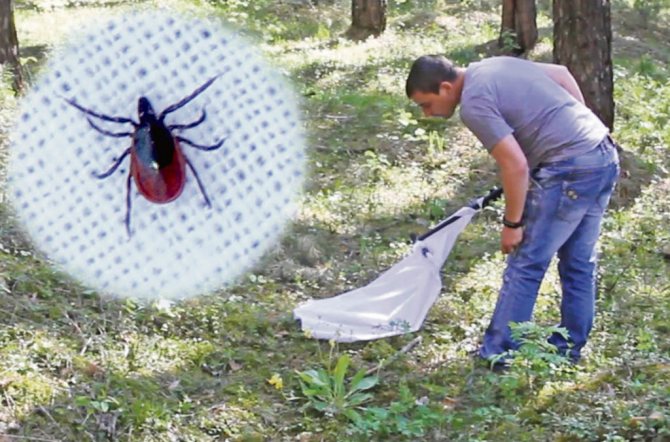

Tick season 2018 started earlier than usual. And in general, ticks wake up earlier every year. This is due to general changes in temperature.And if earlier the first bites in the Moscow region were recorded in May, now this period has shifted to March. The same applies to autumn. Earlier in October it was already possible to breathe calmly, but now even in November bites happen. But the peak is all the same: two weeks in May and mid-August - September.
In hotter regions, ticks hibernate much later. It is not uncommon to find a tick there in November. But on the other hand, their summer break lasts longer. The period of activity is March-May, September-November. There is practically no summer break in northern latitudes. Ticks begin to attack when the average daily temperature reaches above zero and crawl away when the cold sets in.
A little about the pest
It is quite difficult to remove spider mites. After all, it is not always possible to notice a small, 0.2 to 1 mm in size, brown or greenish-gray insect with the naked eye, not to mention its eggs. But the size of the damage caused by the pest is quite impressive, since the spider mite feeds on the cell sap of plants. An enzyme secreted from the salivary gland destroys the chloroplasts of plant cells. Why the leaves begin to turn yellow, dry out and eventually fall off. As a result, the plants stagnate and sometimes even die.
Most often, bushes and deciduous trees are susceptible to pest attacks: ticks settle on cherries, apples, plums. They often live on conifers. Cucumbers, seedlings, melons and gourds, cotton, ornamental plants in greenhouses and open ground can also suffer from massive attacks of plant parasites. The favorite target of the pest is roses. Of indoor plants, the spider mite yucca and orchid are very fond of; it is also found on ficus, cactus and lemon (decorative).
However, before looking for methods to combat a plant parasite, it is necessary to know what conditions are favorable for its spread, as well as at what temperature the spider mite dies. As a place of residence, arthropods select dry and warm places (the most comfortable for them is the air temperature above +27 degrees). When the air humidity rises, they experience depression, so that indoor flowers do not become a treat for the pest, they must be regularly sprayed.
During her short life, and the red spider mite lives for about 45 days, the female lays more than one hundred eggs. Of which, after a maximum of 5 days, young individuals are born. This fact should be taken into account, coinciding with the period of persecution of pests.
Tick-borne encephalitis
Disease poses a particular danger to humans tick-borne encephalitis
... Precisely for humans, because most animals tolerate this disease even without obvious clinical manifestations. According to statistics, out of 100 people who have applied with tick bites, about 10 are infected with this particular virus. Encephalitis is a terrible disease that leads to damage to the central nervous system and the motor center of a person, as a result of which paralysis can develop, and the result can be long-term disability or even death. It is considered comforting that even in places of increased accumulation of ticks, no more than 5% of individuals are infected. Tick-borne encephalitis may not manifest itself in any way even up to 25 days, on average, the incubation period lasts from one to two weeks. Tick-borne encephalitis manifests itself with the following symptoms:
- high temperature (up to 40 °);
- nausea and vomiting;
- acute headache;
- joint, muscle and throat pain;
- diarrhea;
- sweating;
- general weakness.
Basically, the disease manifests itself immediately in an acute form, but sometimes the period of exacerbation is preceded by a state of general weakness and malaise. In any case, if after a tick bite you began to worry about the above symptoms, then immediately consult a doctor, as self-medication can be deadly. The disease can go away completely without consequences, but paresis, paralysis, muscle atrophy, as well as a significant decrease in intelligence are possible. and even the development of epilepsy.
Precautions
1. Avoid bushes if possible and do not allow children to climb in them.
2
Beware of dry areas and dead wood, do not walk in dense grass.
3.Remember that mites prefer deciduous forests. Therefore, a walk in the coniferous forest will be safer.
4. Near ponds, it is better to sit on the sand, which is almost fatal for ticks.
5. T-shirts with short sleeves and shorts are not suitable for a long stay in nature. Your clothing should cover all areas of the body as much as possible. The ideal option would be the presence of cuffs on the sleeves and elastic bands on the legs.
6. Going to nature, you need to think over your outfit so that there are as few open areas of the body as possible. The presence of a headdress is also required. Even when walking in the park, you should not neglect it.
7. After you have returned from a walk, you should look very carefully at all outer clothing and shake it up. The body should also be examined, and the hair should be combed with a fine comb.
8. It is advisable to postpone the camping trip until the hottest months, when the ticks are less active. But in any case, it is best to burn out the vegetation around the tent, as well as under it. Coming from the forest, be sure to inspect your body and clothes, as well as pets that walked with you for lurking bloodsuckers.
Folk remedies
Tar, garlic and some essential oils are used as folk remedies for ticks. Tar and essential oils, in particular tea tree oil, are used externally, that is, they are rubbed with open areas of the body. And garlic - internally, it is usually eaten before the hike.
Anti-tick mixture:
10 drops of tea tree essential oil 50 ml of water (or cologne like "Chypre") Preparation: Mix water and essential oil and pour the mixture into a bottle. Shake well before use. Apply a few drops of the mixture to the palms of your hands and rub them over your neck, arms, legs and hair. After returning from the forest, spray the clothes with a solution (using a spray bottle).
Anti-mite shower oil.
15 drops of tea tree essential oil 30 ml of shower cleanser. 5ml of soybean oil. Preparation: Mix vegetable oil and oil for washing in a suitable container. Add essential oil and mix thoroughly again. After a walk in the woods, shower with this oil. If the mite has already invaded the skin, anoint its abdomen and skin around it with 100% tea tree oil.
There is also a popular way to protect yourself from ticks in advance: they chew pine needles and swallow saliva. But this must be done slowly, and gradually. Since spring. The tick does not cling to such people - it crawls, crawls, sniffs the secretions on the skin of the sweat glands, sniffs them, it will not like them, and it will not bite a person with such a smell.
Based on materials from matricca Rubicon website
How to dress in September for a nature walk
The first rule is that clothes should be closed. The legs need to be tucked into the socks, there is no need to wear flared trousers. It is worth choosing a jacket with a long sleeve. It is necessary to exclude clothes with cutouts and buttons. If you have long hair, you need to collect it. We must not forget about the hat even when it is warm, as a means of protection it is necessary. High boots made of rubber and insect screens are required.
What should be the behavior in the autumn in the forest:
- you cannot climb into tall bushes and grass unnecessarily;
- follow the trampled paths;
- avoid dry tall grass as a place of possible accumulation of ticks;
- be in the forest during the day, avoiding the morning and evening hours.
After arriving home, it is necessary to examine the body for the presence of sucked ticks. In women, parasites often target the chest and neck, in men, the groin and armpits. This is due to insects' instinct for warm places well supplied with blood. Shake the clothes, comb the hair with a fine comb.
How to choose a remedy for ticks
An additional method of protection is a variety of repellents and aerosols. The first of them act by scaring away with the help of an unpleasant smell for arachnids.Repellents can be applied to the skin.
Means-acaricides with the active substance alphacypermethrin in the composition paralyze the tick and it disappears. These drugs are harmful to human skin, so they are applied to clothing. At the same time, you need to process it before putting it on.
There are insecticidal and repellent agents that combine the advantages of the listed ones and act more actively. They are applied only to clothing.
When applying funds to wardrobe items, it is better to treat the waist, ankles, pelvis, arms and collar
It is important to follow the instructions and control the expiration date. Sometimes rainfall and windy weather can reduce the effectiveness of these drugs.
Domestic specialists have developed special clothing to combat arachnids. The material for tailoring the special suit is made with impregnation, from the inside the leather is covered from it by a lining. When an insect hits this tissue, it is paralyzed. If it continues to move, then it rolls into special external sections. They are located in the places most beloved by parasites, where the tick is exposed to repeated contact with a special agent and dies. The suit has already been tested in Russia and has proven to be 100% effective.
Protection methods
September is the time for collecting mushrooms, but it should be remembered that insect activity begins during this period
Therefore, when going for a walk in the forest, you should take precautions to avoid an unpleasant meeting with the parasite.
How to dress:
- Clothing should be of dense fabric and cover arms and legs completely.
- At the bottom of the legs on the trousers and on the sleeves of the jacket, dense elastic bands are desirable.
- Shoes should be chosen one that covers the feet completely with the ankles.
From time to time, clothing should be inspected for ticks to avoid the danger of ticks crawling under the collar or other parts of the suit. This inspection is recommended every 30-40 minutes. This measure will allow you to detect the parasite before it bites a person. It is recommended to choose light and monochromatic clothing, because insects will be clearly visible on it.
During periods of increased activity of ticks, it is better to avoid places with dense grassy vegetation. It is necessary to adhere to paths and trodden paths. All these measures will reduce the likelihood of the parasite getting on the skin.
Before walking in a park or forest belt, it is necessary to treat clothing and exposed areas of the body with chemical protection against ticks. According to the method of exposure, they are divided into three groups:
- killing, which include "Tornado-anti-mite" and "Refamid taiga";
- deterrent, the best of which are "Dipterol", "Permanon" and "Pretix";
- combined, including "Mite-kaput aerosol" and "Mosquito-spray - a special remedy for ticks."
Before using chemicals, you should carefully study the instructions for their use, especially paying attention to the conditions for reapplication. There are factors that can affect the duration of such funds, significantly reducing it.
This could be due to wind, heat, rain, or a particular person's sweat pattern.
Following simple recommendations and observing preventive measures will help maintain health and make it possible to enjoy a walk in the forest without unpleasant consequences.
Quick tips for dog owners:
1. If warm days suddenly set in in winter, a thaw began and in some places earth and last year's grass appeared from under the snow, this means that the dog must be examined after the walk.
2. Try not to walk with your dog near heating mains. Eliminate your pet's communication with stray dogs.
3. Do not forget to regularly inspect outdoor dogs that live in booths and enclosures. Especially during the warming period.
four.In the spring-summer-autumn, it is necessary to regularly carry out anti-mite treatment of your dogs. In the winter season, it will not be superfluous to have a "duty" spray against ticks, which can be used before a walk when a short-term warming is established outside (at the time of freezing temperatures).
I have already written about my negative attitude towards the Bravecto drug, which is popular today, on the pages of the Dog-Blog, you can familiarize yourself with it at this link. I am very grateful to our readers who leave their comments under this material!
I am an advocate of more gentle and safer treatments for treating dogs against ticks. Which ones, read in this material, where I list the most reliable, in my opinion, drugs.
Where do ticks live and what climate do they like?
Ticks are able to adapt to different environmental conditions, they can even survive at low temperatures. But there are conditions conducive to the rapid reproduction and comfortable life of arthropod parasites.
The carriers of encephalitis and borreliosis are most often the taiga forest tick and the European tick. They prefer a habitat with grass and shrubs, as well as areas of forest belts with dense vegetation. A safer place for animals and humans is where the grass is low and there is little vegetation. Ticks are not found on asphalt areas, wide trampled paths and clearings, but they love to wait for their prey along the paths.
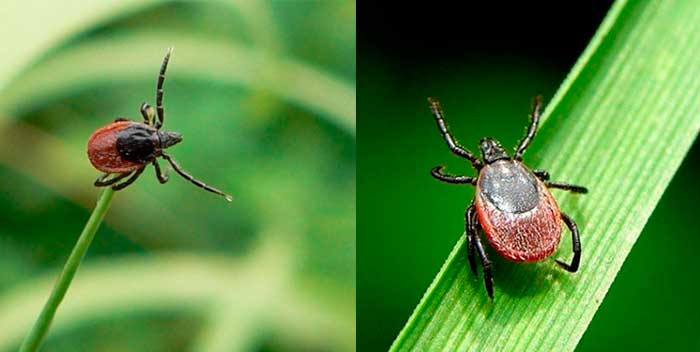

Ticks are found in almost all types of forests, be they birch, spruce, or mixed types. Only the coniferous environment is unfavorable to them. Encephalitis mites live in almost all climatic zones of Russia, sometimes they are found even in harsh conditions beyond the Arctic Circle because they have learned to adapt to all environmental conditions.
In Russia, encephalitis ticks are found from Siberia to semi-deserts. Many cases of attacks were recorded in the Moscow region and adjacent territories, in the Caucasus, in the Altai Republic, Volgograd, Kemerovo and Kirov regions. The most common in the Far East, in the Central regions of Russia and in the Northwestern District.
The best weather for tick development is warm and humid, which is why the main peak of development occurs in spring and early summer. Ticks do not tolerate dry and hot weather, the scorching sun is destructive for them.
In which regions of Russia are there few ticks?
The rarest of these bloodsucking are found in the northern regions of Russia, Siberia, the Urals, Magadan, Murmansk, Kamchatka and the Nenets Autonomous Okrug.
But this does not mean at all that there are no ticks and you can forget about precautions when visiting forests and parks.
Habitat
Starting from second decade of April to the end of October you can pick up the parasite anywhere. If the weather is hot, they avoid open, well-lit areas, trying to hide away. The blood-sucking insect loves moist mixed and deciduous forests. The habitat is shaded, with dense grass. In September they can be found:
- in willow, windbreak;
- on the banks of rivers, lakes;
- in city parks;
- on forest paths densely overgrown with grass;
- at the bottom of ditches, holes.
There is an assumption that ticks fall on people from trees. In fact, this is not true. Insects do not tolerate direct sunlight, they love the coolness of the forest when the ambient temperature does not exceed 21 ° C. Ticks are quick-witted creatures. They wait for their prey along the animal paths, where warm-blooded animals constantly walk. They can be caught on forest paths. They hide in the thickets, sit on shrub branches, tall blades of grass. When a person or an animal passes nearby, they pounce on him. The insect is able to smell its prey at a distance of up to 10 m.
Interesting! Feeling blood, the tick raises its front limbs towards the victim, preparing for an attack.
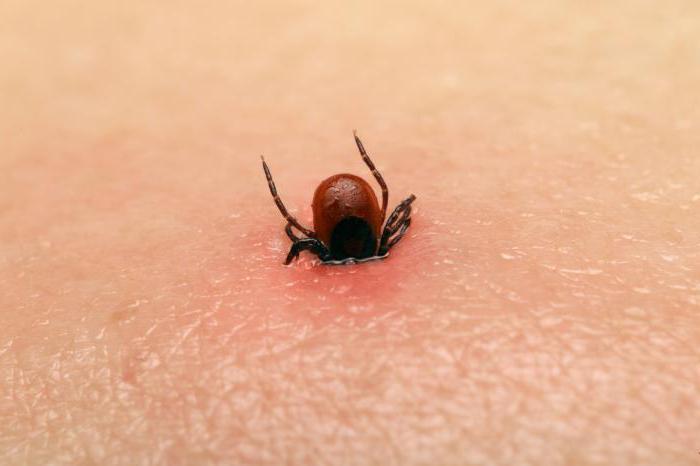

Can ticks live in the house?
It happens that after a walk, dogs or cats bring blood-sucking parasites into the house in their fur. Often, the person himself unnoticed brings them into the house along with bouquets of forest flowers, berries or mushrooms. If you do not carefully examine all the clothes after returning from the forest or park, you may not notice the parasite lurking on it.
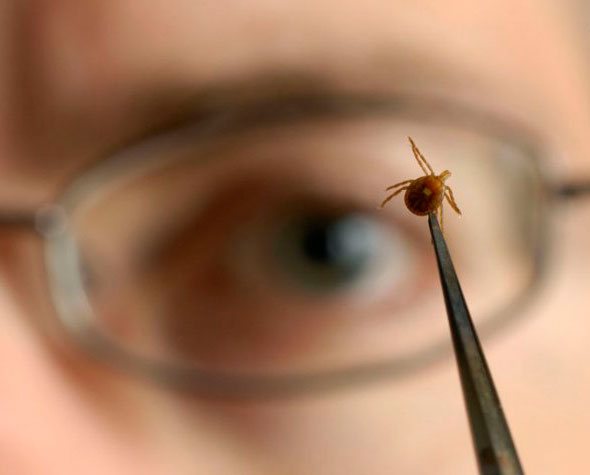

How many mites can live in an apartment?
Ticks brought from the street will live in the house for no more than 9 months. They reproduce only in their usual environment. In an apartment where there is no plant litter, their eggs will not develop. On a cat or dog, ticks cannot reproduce and live fully.
Nevertheless, you should carefully examine yourself and your companions after each foray into nature, so as not to introduce parasites into an apartment or a private house.
Will the wasps return to the roofed hive in the spring?
After winter, female wasps wake up. This happens when the air warms up to +15 degrees. Now they need to find a home for a warm period in order to settle their offspring in it. Their appearance will not be immediately noticeable. At first, the wasps will equip the home and actively reproduce. And by the middle of summer you can see a full hive of young individuals.
Natural instinct calls the females to return to their native land. Therefore, if you do not destroy the houses of striped insects in winter, while they are empty, then in the spring a new family will settle there. How to effectively destroy a hornet's nest:
- remove and throw away from home;
- burn;
- treat with "Dichlorvos" or boric acid;
- sprinkle with bleach or a special deterrent compound (Raptor, Getom, Alatar).
Important: even if the nest was physically destroyed, the place where it was located must also be treated with a chemical composition. Otherwise, the wasps can simply build new housing on the site of the old one in their familiar territory.


You can facilitate the relocation of the swarm to a new location, away from people. For this, comfortable platforms are created, protected from bright light, wind and moisture. You can lure them with sweet fruits, water and sugar.
In nature, the wasp did not appear in vain. At first glance, these insects are of absolutely no benefit, rather the opposite. But in fact, striped ones destroy clouds of pests in the garden and garden in order to feed the offspring. And they also promote the reproduction of flowers and plants, carry pollen. And if you do not make them angry and do not interfere during the period of conception of offspring, then the wasps can peacefully exist next to a person. The life cycle is short, but they do a lot in a year. Until the last days, they help the offspring to survive so that the food chain is not disrupted.
Control methods
Preparations for treating the area from ticks
You can scare off with a cologne with a pungent smell, essential oils of citronella, lavender, and cloves. Sprays, aerosols are used - Gardeks, Reftamid Antiklesch, Raptor, Raid, Taiga, Off, Moskitol. Thoroughly spray clothes, some products are allowed to be applied directly to the skin.
To rid their land of parasites, to ensure safe outdoor recreation, smoke bombs are used - Quiet Evening, Whirlwind, Fomor. Use solutions for spraying grass, trees based on insectoacaricides. You can poison with the drug Tsifox, Sinuzan, Executioner, Medilis-Tsiper, Forsyth.
Mites are not massively poisoned, as this increases the chances of the death of natural enemies - birds, animals, insects. This explains the fact why there are a lot of ticks. Initially, after the use of chemicals, pests disappear, but along with them, natural enemies. Over time, the population of pests increases, but there are no “destroyers”. A situation arises when people say that there were no ticks before, now there are a lot of them.
Pests can become more active at the end of March, end their activities in November. Therefore, you should always remember about safety, but you should not be afraid of panic.Not all ticks are contagious; with timely access to specialists, the risk of the disease decreases or the disease proceeds without complications. In advance, you should protect yourself with clothes, drugs against ticks, get vaccinated when visiting dangerous territories and regions.
Insect appearance
In order not to suffer from bites and to protect yourself, you need to know what a tick looks like. The parasite belongs to the group of arthropods, which includes up to 40 thousand species. Of all the varieties of human blood and other living organisms, the ixodid individual feeds on. The parasite weighs 3-4 mg, looks like a spider with a flattened body. The size of the body depends on the species, varies between 3-25 mm. Features of the structure:
- The body consists of a head and torso.
- The skin is folded, alternating with hard and elastic fabric.
- On the front side of the body there is a movable proboscis. With them, the parasite sticks to the victim and remains in this state for a long time. Some ticks have long proboscis, others short.
- Insects have no eyes. They find the victim by the smell of blood, with the help of well-developed receptors.
- Above, the body of females is partially covered with a shield, in males - completely.
- The parasites have 8 movable legs, each equipped with a claw and a suction cup. This allows the tick to move easily over any surface.
- Breathing plates are located behind the fourth pair of legs.
- Some individuals have a pair of simple eyes located along the edge of the scutellum at the level of the second pair of legs.
- The female differs from the male in large size. The color of her body is brown, the scutellum is brown. The body of the male is smaller, the shade is brown.
The danger of bloodsucking
In September, tick activity remains at the same level as in summer. There is no heat, it rarely rains, the weather becomes comfortable for their life. Blood-sucking parasites begin to prepare for hibernation and become aggressive. Their bites are considered dangerous for 2 reasons:
- regardless of the type of tick, its habitat, they carry many viruses;
- can cause various diseases.
When bitten by an insect, you can contract encephalitis, borreliosis, typhus, spotted fever and other viral diseases. When the parasite digs into the skin, it becomes difficult to pull it out. Frightened, the person removes it incorrectly. Sometimes the head of an insect remains in the wound, which begins to fester. Gradually, the size of the wound increases by more than 1 cm. The bite of one individual can cause severe irritation or an allergic reaction.
Removal of the parasite
If, after going into the forest, a tick is found on the body, it is necessary to remove it. The main thing is not to panic and do everything right. Pressing or pulling is strictly prohibited. The best option is to contact the clinic for qualified help.
It is impossible to determine by the type of insect whether it is a carrier of the disease. Therefore, you should put it in a bag and take it to a medical laboratory for research in order to make sure that it is not a source of infectious disease.
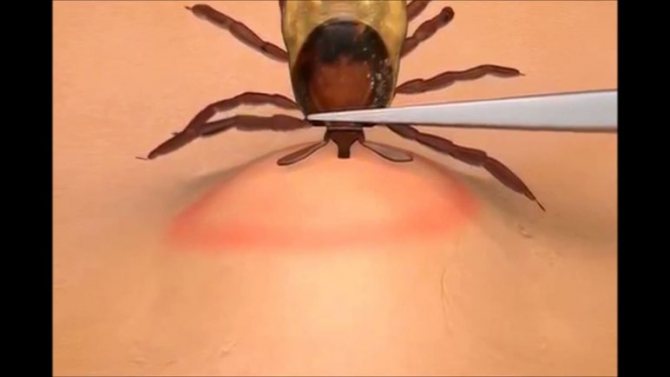

You can also use tweezers to remove the tick. After the procedure, the wound should be treated with a disinfectant solution. If a situation arises when the proboscis of an insect remains at the site of the bite, nothing else needs to be done. The remains will be excreted by the body itself. After removing the tick, wash your hands with soap and water.
Diseases arising from a tick bite
Why is a tick bite dangerous for humans? Consider the diseases transmitted by these insects and their symptoms.
Lyme disease characteristic:
- constant state of fatigue;
- headache appears;
- the site of the bite turns into a noticeable wound;
- there is a red rash over the body;
- with timely treatment, it is easily stopped by antibiotics.
Spotted fever, characteristic:
- body temperature rises significantly;
- there is severe pain in the head;
- nausea is observed, vomiting is also possible;
- there is soreness in the muscles;
- a rash appears on different areas of the skin, most often on the wrists, arms and legs;
- causes serious complications, in the future, stroke or impaired renal function is possible.
Tularemia, characteristic:
- chills of the body;
- a very high temperature rises;
- headache worries;
- nausea;
- lymph nodes are enlarged;
- there is swelling in the area of the bite;
- an open wound is formed;
- serious consequences are possible, such as pneumonia, peritonitis, gangrene, etc.
Ehrlichiosis, characteristic:
- manifests itself from the first day after the bite;
- persistent nausea and vomiting;
- weakness is felt;
- Strong headache;
- inflammation occurs in any organ;
- there may be a state of chills;
- the outcome of this disease is unpredictable, since the disease can pass asymptomatically, or it can cause serious damage, up to and including death.
Relapsing fever, characteristic:
- the heartbeat increases significantly;
- unbearable pain in the abdomen and head is felt;
- weakness of the whole organism is observed;
- feverish condition;
- usually heals without consequences, no death is observed.
Encephalitis, characteristic:
- the temperature is kept around 39;
- there is a fever;
- severe chills;
- weakness of the whole body, muscle soreness;
- there is a pronounced detachment in consciousness;
- severe consequences in the form of meningeal syndrome and paralysis;
- manifests itself three days after the bite.
Babesiosis, characteristic:
- constant feeling of unwell;
- complete aversion to food;
- general fatigue is felt;
- worried about fever and chills;
- anemia develops;
- the disease provokes renal and hepatic failure;
- profuse sweating.
I would like to note that even if a preliminary vaccination against a tick bite was carried out, it only helps against encephalitis and does not apply to other diseases.
You have the opportunity to see photos of dangerous ticks for humans in the article.


The clinical picture of allergy to household dust
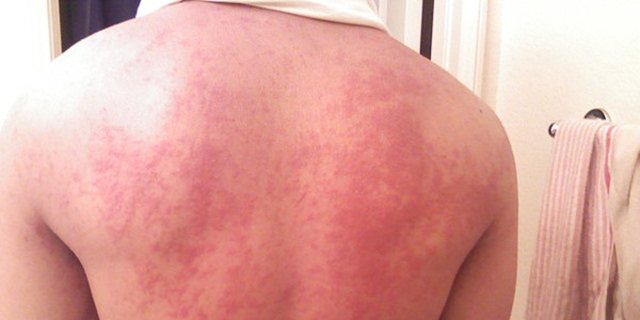

An allergic reaction to dust is rare. This reaction occurs only in predisposed individuals and is no different from allergies to food or cosmetics. Symptoms of a dust mite allergy on the skin:
- Severe itching that occurs immediately after or some time after contact with an infected surface. Itching can be localized in one area of the body or have a generalized character.
- Redness and rash. An itchy rash that rises above the surface of the body usually appears on the skin at the site of contact. The elements of the rash are prone to fusion with the formation of giant foci. After taking an antihistamine or on its own, after a while, the involution of the rash occurs without residual effects (pigmentation, scars, and others).
- Combing. Appear due to intense scratching of the skin during itching. Pathogens can enter the wounds, which leads to suppuration and worsening of the condition.
- Conjunctivitis. There is a sensation of a foreign body in the eyes, photophobia, lacrimation. Allergic conjunctivitis quickly turns into bacterial, which is dangerous for the development of complications (keratitis, uveitis, and others).


Attacks of bronchial asthma with allergies to household dust are seasonal: the process is usually exacerbated in the spring and autumn months, at night. The attack of suffocation is protracted, the frequency and duration of attacks decrease with a change of housing or regular wet cleaning.
Winter is not tick time
With some certainty, we can absolutely say for sure that winter for a tick is a time of hibernation and waiting. Such is the nature of this blood-sucking parasite, there is nothing to be done. Tick activity begins in spring, maybe in early-early spring, when even in February it suddenly becomes +10, and at night the thermometer does not drop below zero. Only warmth allows the tick to start its activity.As long as the frosty, dank and dry weather persists, the tick can be almost not afraid. Why almost? Well, firstly, spring does not come on schedule throughout our country, and it is not always as cold everywhere as in the central part and in the north. It is likely that in some southern regions ticks will annoy most often and most of all. Especially when the weather changes from week to week.
The tick is a parasite, an arthropod blood-sucking, feeding on the blood of animals and humans. If we talk about the very ticks that annoy us and our pets, then we definitely mean the Ixodid species. Although there are a lot of tick species, it is the Ixodidae that are the most dangerous and numerous.
The period of activity of ixodid ticks, in temperate climates, affects the spring-summer-autumn. Depending on the weather, ticks can be most active in April (sometimes in February) and also in March. At the moment of awakening, they will search for food with all their might. Further, the activity will systematically increase with the growth of the tick population, but by the middle of summer it will subside. Ticks dislike not only frost and cold, but also heat.
Their main comfort zone: air temperature from +5 to +15, as well as low humidity. As soon as the air becomes dry, and the air temperature warms up to +20 and + 30 degrees, the population of ticks will begin to decline sharply. Literally in a week of heat, their number will sharply drop to 10-15% of active individuals. As a rule, by mid-July there are almost no ticks on the fields we are used to, sunny paths, etc. All remaining individuals are in places that are still humid and less warmed by the sun: near ponds, in trees and in tall grass, near hollows and forest edges, where the sun's rays almost never break through the foliage.
Nevertheless, the activity of the tick remains throughout the spring-autumn period. Even in autumn, when the temperature drops again, the vegetation withers, and at night it can be too cold, even at this time the ticks are active. Only with the onset of frost, as well as at low night temperatures, their activity subsides by almost 99%. In rare cases, bites are recorded in December and November, but often in climatic zones in which there are no severe frosts and early cold weather. By the way, ticks are also in resort places. In Turkey, ticks are active for a long time, so all vacationers should be careful.
Tick bites in winter
However, tick bites are sometimes reported in winter. How this happens is not clear to anyone. In some cases, the tick was brought home by hunters and fishermen who returned from nature in the autumn. He was messing around for a long time, and then he still sucked. Bite cases are reported in those who keep large greenhouses in their summer cottages. People not only grow vegetables, but just keep a small home garden for the soul, so to speak. It does not occur to them that even such a tiny flower garden can become a habitat for a tick.
But how he got there is an even more complicated question. In general, scientists agreed that the tick can be brought along with the earth or grasses that summer residents drag home. The individual was in captivity and hibernation for a long time, but when it came to life in the home garden, it immediately fulfilled its natural role - it found a victim and sucked. There are also cases when ticks enter homes with the help of animals. There are no statistics on this, but some dog owners complain that they found a tick on their pets already far past December, when it was snowing in the yard for a month.
* * *
In winter, the tick is inactive. His time will come in spring and before autumn, but all the frosts and snowfalls will make him hibernate. You can get a tick bite in winter only if this parasite somehow settled in your home and all year round heated garden, or when it “came on the dog” or was lying around in clothes. Otherwise, winter is the safest time.
⇒ Our knowledge base:
- Devices for removing ticks.
- Ticks in Europe?
- Ticks in the forest.
- The main types of ticks in the Russian Federation.
- Types and varieties of ticks: list
Manifestation of winter diapause
With a decrease in the temperature regime of the air, the activity of ixodid ticks also decreases. Slow metabolism and good protection from the cold helps them survive unpleasant weather conditions in the life cycle in which they were caught by the cold without any problems. Pests do not need food, they just freeze before the onset of heat.
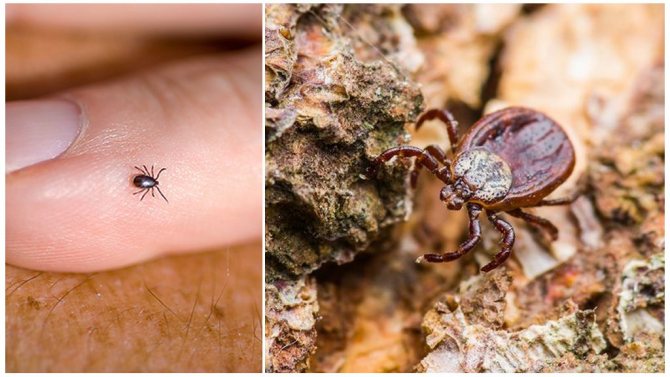

Mites
For normal wintering, the tick needs the following conditions:
- the air temperature is not below zero;
- high humidity.
Ticks die at a temperature of minus 15 ° C instantly, in coniferous forests, parks and squares without the proper thickness of the deciduous cover and the complete absence of grass, they die in a few hours. Those who survived the cold in favorable conditions are activated with the first rays of the sun, already at + 3 ° C they will look for a victim for their further life.
Global warming has a positive effect on the reproduction and distribution of ticks, heat and high humidity contribute to an increase in the period of their activity, which allows females to lay more eggs. The process begins in the first months of autumn, with a slight cold snap, the females, after having refreshed themselves, are looking for a favorable place for laying eggs. They mainly choose:
- ravines with a lot of rotted leaves;
- thickets of tall grass;
- thicket of the forest.
If in the future the air does not warm up to sufficient temperatures, the larvae hatched from the eggs will remain until spring at this stage of development.
Encephalitis infection statistics in Russia
In 2020, 32 people died from a tick bite followed by infection with encephalitis (according to Rospotrebnadzor). In 2020, 510,000 people received medical assistance who were bitten by ticks. This figure is higher than last year and generally exceeds the average annual values.
Every year from 2010 to 2020, between 29 and 50 deaths from viral tick-borne encephalitis were recorded. For 2020, 29 deaths were recorded, among them there was one child.
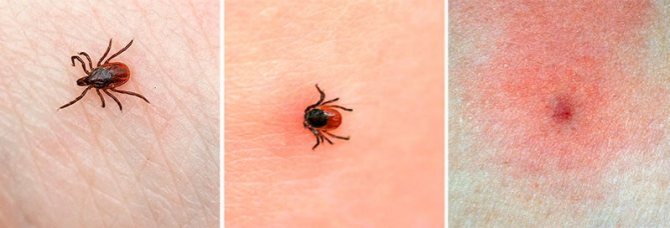

The main causes of complications and death from encephalitis are neglect of vaccinations and untimely visits to a doctor. The areas of sanitization are increasing every year, but the number of victims is not decreasing.
In the Moscow region from 2020 to 2020, 41 cases of tick-borne encephalitis were detected, all of them certified by the laboratory. 14 cases were immediately registered when the virus was accidentally brought from other regions of Russia. As statistics show, mostly vacationers catch the infection, leaving to rest in the area in nature. Since 2003, cases of a local nature have also been recorded, for 2015-2017 this figure reached 113 registered cases out of 2873 available. In 2020, the percentage of those infected with encephalitis, namely 62%, fell on the capital of the Russian Federation - Moscow and the region.
According to data for all the past years, a greater number of infected people were noted in the Republic of Tyva. The table shows the statistics with the highest rates.
| Locality of the Russian Federation | % per 100 thousand population |
| Tyva Republic | 23,5 |
| Vologda | 23,04 |
| The Republic of Khakassia | 12,8 |
| Kirov region | 15,07 |
| Sverdlovsk region | 12,2 |

